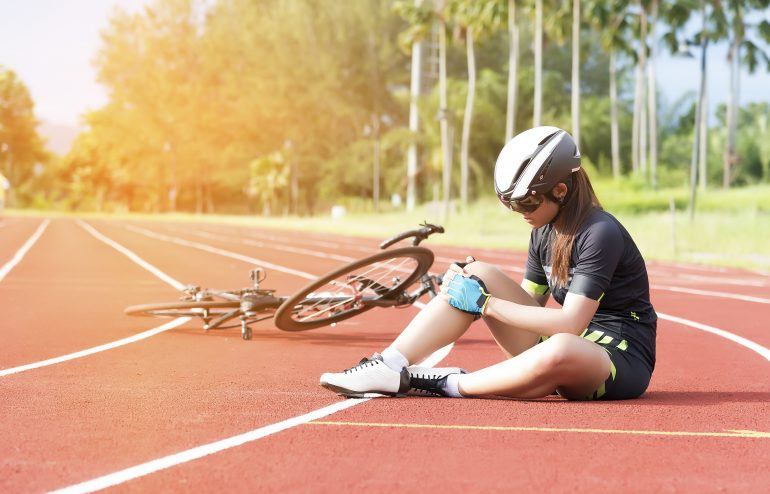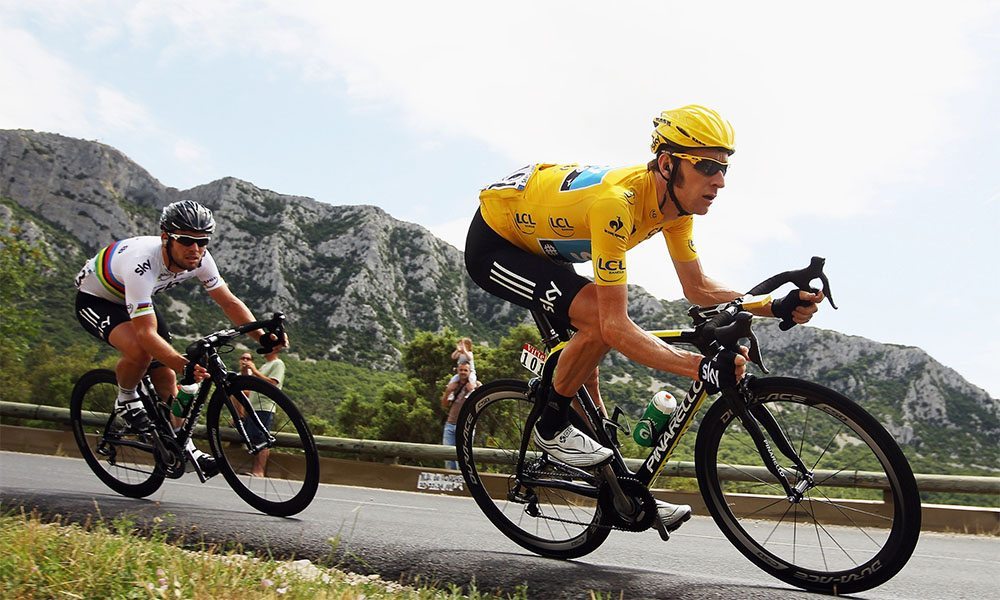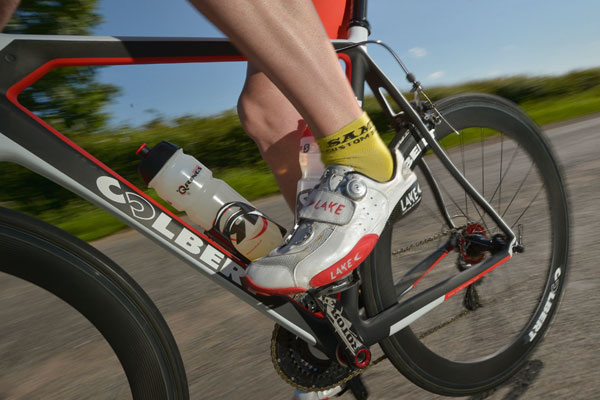Bart Haynes here in sunny San Diego. Now that cycling is about to be in full swing, it’s important to talk about injuries and cycling pain, as you are probably at the greatest risk for issues at the beginning of the riding season.
Today I wanted to write about an under-discussed aspect of cycling: injuries and pain. Cycling has a reputation for being one of the very best things you can do for overall health, especially in leg injury rehab, maintaining weight, and maintaining excellent cardiovascular health.
I can also say from experience that it has the reputation for being low impact and relatively injury-safe. In some ways, this is very true. It is a low impact sport. You can prevent serious injuries by cycling as opposed to, say, running. But that doesn’t mean cycling is without its injury and chronic pain risks.
Let’s look at the top culprits and how to alleviate them.
Violent Injuries from Cycling
I call these violent injuries because they happen from crashes, and bike crashes tend to be violent and bloody. In my personal experience, I have mainly crashed because of:
- My own cycling stupidity
- Wet leaves, gravel, etc.
- Cars being stupid
- Pedestrians not paying attention
- Other cyclists not having good etiquette
Mostly through error, I have learned that the best ways to avoid crashes are:
- Pretend every cyclists and pedestrian is on the path for their very first time
- Assume no cars see you
- Stay focused the entire ride
- Don’t use front bars while riding
- Don’t try and ride with coffee in one hand
Knee Pain While Cycling

You may not be surprised about this one, we are after all rotating out knees in and out thousands of times over the course of riding, right?
Generally, this is not a contributing factor to knee pain from cycling. In fact, cycling is one of the most common treatments for people who have had surgery in their knee, hips, etc.
Usually, knee pain in cyclists develop from improperly fitted cleats. It’s extremely important on your first riding with cleats to have them evaluated by someone who really knows what they’re doing, like specialist at a bike shop. The bonus with this is that you will get more power out of your strokes with properly positions cleats.
You can also get knee pain by riding too much in low gears.
Neck and Back While Cycling
Neck and back pain are both things I have struggled with while riding. Why?
Next time you are out driving or riding, observe cyclists. What do their backs look like? What do their necks look like? Most cyclists – and this includes Younger Cyclists Bart – ride with:
- A curved back
- Hunched shoulders
- Drooping neck
Posture is absolutely critically important for avoiding neck and back pain.
Furthermore, an improperly positioned bike can greatly contribute to bike pain, such as your seat being too high, handlebars too low, etc. Once again, make sure you go to the bike shop and get adjusted to maximize your power output and riding comfort.
Muscle Tightness

Muscle tightness is another thing most of us cyclists deal with form time to time, especially in the hips and calves.
Preventing hip tightness is actually quite easy. Stretching.Pre-ride stretchingis something I highly advocate for, as it lets you start your ride warm and flexible and prevents tight, cramping muscles.
Saddle Soreness and Saddle Sores
Saddle soreness are another thing that can be brutal, especially at the beginning of the season. Overdoing it can mean a subsequent weak of sore-sitting and no riding. Fortunately, your body usually adjusts to quickly. Getting a fresh pair of riding shorts every year can really help this “break in” period.
Too much time in the saddle can also lead to saddle sores, which are sores that develop on your skin after too much time in the saddle. It’s caused by friction between your clothes and skin. Using creams, not wearing underwear while you ride, not having the saddle too high, and buy high quality biking clothes will make all the difference.
Foot Numbness While Riding

If you get foot numbness, you likely need new shoes or to not tighten down your shoes so much. Case in point, every time I get foot numbness, it is alwaysbecause of:
- The shoes I just bought
- OR my shoes are worn out and need replacing
Switching shoes has always fixed the problem of foot numbness. It’s a very good idea when you buy new riding cleats to spend some time just sitting in them at home and going out for at least one ride before deciding whether or not they are keepers.
Happy cycling,
Barton Haynes
